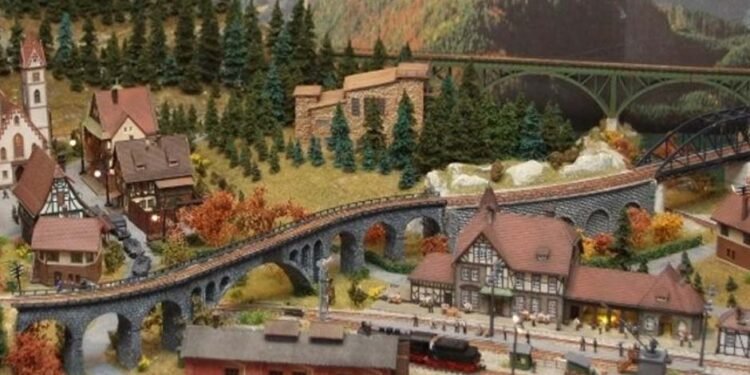Railroad modeling, also known as model railroading, is a beloved hobby that has been enchanting enthusiasts of all ages for generations. The world of model trains is a captivating realm where creativity, craftsmanship, and imagination come together to recreate the charm and nostalgia of railroads on a smaller scale. From meticulously building miniature landscapes to designing intricate train layouts, the art of creating these trains is a delightful and rewarding experience that allows hobbyists to build their own miniature worlds.
The Journey Begins: Choosing Your Scale
One of the first and most crucial decisions in model railroading is choosing the scale. These trains come in various scales, representing different proportions of the real-life counterparts. The popular scales include HO, N, O, and G, each offering unique challenges and opportunities for creativity. HO scale, being the most common, provides a good balance between detail and space, making it a popular choice for beginners and seasoned modelers alike. On the other hand, N scale offers more intricate layouts for those with limited space, while O and G scales are perfect for those who prefer large, grand layouts.
Crafting the Landscape: Building Scenery
Creating an immersive and realistic landscape is an essential aspect of model railroading. Hobbyists meticulously design and construct miniature worlds, complete with mountains, valleys, rivers, and towns. The process involves using a combination of materials, such as foam, plaster, and scenic textures, to sculpt the terrain. Trees, foliage, rocks, and other scenery elements are carefully placed to bring the model train layout to life. The art of crafting scenery allows modelers to unleash their creativity and transport themselves and their viewers to a mesmerizing world of imagination.
The Iron Horses: Assembling Model Trains
At the heart of model railroading are the model trains themselves. Building and assembling the trains require attention to detail and a passion for precision. Modelers can choose from a vast array of locomotives, freight cars, and passenger cars, representing various eras and railroad companies. Some enthusiasts even enjoy scratch-building or kit-bashing, which involves modifying existing models or creating unique locomotives and rolling stock from scratch. The joy of seeing the trains come to life on the tracks adds an extra layer of fulfillment to the hobby.
A World in Motion: Laying the Tracks
Laying tracks is a pivotal part of model railroading, and it requires careful planning and execution. The tracks are the lifeline of the miniature railroad, determining the flow and operation of the model trains. Modelers carefully lay the tracks, ensuring smooth curves, switches, and turnouts for seamless train movement. The wiring and control systems are also meticulously set up to allow multiple trains to run simultaneously. The satisfaction of seeing the trains glide effortlessly along the tracks is a rewarding experience for any model railroader.
Bringing Realism to Life: Weathering and Detailing
To achieve authenticity and realism, modelers often weather and detail their trains and scenery. Weathering involves adding wear and tear to the trains, making them look like their real-life counterparts that have endured the elements of time and travel. Modelers use various techniques like airbrushing, weathering powders, and paint to achieve the desired effect. Additionally, detailing the scenery with miniature figures, vehicles, and buildings adds depth and character to the model train layout, making it even more engaging for viewers.
Creating a Narrative: Storytelling with Model Trains
Model railroading goes beyond assembling trains and scenery; it allows modelers to create captivating narratives within their layouts. Hobbyists often design scenes that depict specific eras, locations, or historic events, effectively telling stories through their miniature worlds. From recreating a bustling cityscape from the 1950s to depicting a peaceful countryside scene from the 19th century, model trains offer a canvas for storytelling that sparks curiosity and fascination in viewers of all ages.
Conclusion
The art of railroad modeling, with its meticulous attention to detail and boundless creativity, allows enthusiasts to build their miniature universes filled with the charm of trains and the allure of the railroad era. From choosing the scale to crafting the landscape and assembling the model trains, every aspect of model railroading is a testament to the passion and dedication of its practitioners. As model trains come to life on carefully laid tracks, they evoke a sense of nostalgia and wonder, taking both the modeler and the viewer on an enchanting journey through a world of precision, craftsmanship, and imagination.












